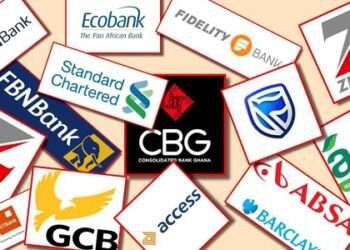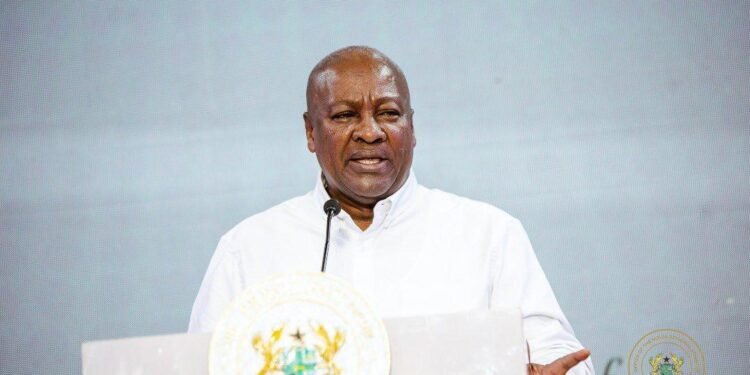Ghana’s banking sector witnessed a sharp contraction in credit activity as total net credit flows declined by a staggering 39% year-on-year, dropping to GH¢8.660 billion in August 2025 from GH¢14.247 billion in August 2024.
The revelation, captured in the Bank of Ghana’s Monetary Policy Report, signals a period of cautious lending and portfolio rebalancing within the country’s banking sector.
The data paints a picture of subdued credit expansion, reflecting both macroeconomic tightening and a shift in lending priorities by banks. The report suggests that this decline was primarily driven by a reduction in credit to the public sector, while private sector credit also recorded a moderation as banks increasingly reallocated their assets toward government and central bank securities.
The sharp drop in total credit flows underscores a growing preference among commercial banks for lower-risk investments. Over the past year, many banks have opted to increase their holdings of Government of Ghana and Bank of Ghana securities, seeking to cushion themselves against the uncertainties of private lending amid inflationary pressures and a volatile interest rate environment.
Analysts note that this trend, while prudent from a risk management standpoint, may stifle private investment and slow economic recovery efforts. “When banks divert funds to government instruments, it often limits credit availability to businesses that drive productivity and job creation,” said an economist familiar with the report.
This cautious stance by the banking industry is consistent with the Bank of Ghana’s broader monetary policy direction, which has aimed to maintain macroeconomic stability in the face of elevated inflation, currency depreciation, and fiscal adjustments under the ongoing IMF-supported program.

Private Sector Credit Still Dominates Despite Slowdown
Despite the contraction in overall credit flows, the private sector continued to account for the lion’s share of total credit in August 2025. According to the report, private sector credit amounted to GH¢10.710 billion, down from GH¢14.319 billion in August 2024. This represented a slowdown in nominal terms but reaffirmed the sector’s importance as the dominant recipient of bank lending.
In percentage terms, the private sector’s share of total outstanding credit rose to 95.5% in August 2025, compared with 92.7% a year earlier. The data suggests that while the volume of lending declined, banks still favored private enterprises over public sector borrowers, possibly due to better returns and reduced exposure to fiscal risks.
The Bank of Ghana further reported that outstanding private sector credit stood at GH¢91.028 billion at end-August 2025, compared with GH¢80.318 billion a year earlier. In real terms, this represented a modest growth of 1.7%, contrasting with a contraction of 1.1% during the same period in 2024.
Sectoral Distribution Highlights Economic Focus
A breakdown of credit allocation across various sectors offers further insight into the structure of Ghana’s lending landscape. The services sector continued to dominate, accounting for 68.2% of total private sector credit, followed by commerce and finance (23.8%) and manufacturing (23.0%).
This pattern underscores the continued dominance of the services and trade sectors in Ghana’s economy, with manufacturing still struggling to attract a significant share of lending despite government efforts to promote industrialization and value-added production.
The limited flow of credit to manufacturing has raised concerns among industry players and economic observers who argue that long-term growth and job creation depend heavily on expanding industrial capacity. Meanwhile, without adequate financing, Ghana’s push toward industrial transformation under initiatives like ‘One District, One Factory’ could face serious constraints.
Real Sector Credit Growth Shows Modest Improvement
While the nominal figures indicate a decline, the real sector private credit growth recorded a slight improvement in 2025, expanding by 1.7% compared to the 1.1% contraction observed in 2024. The report noted that the growth in real private sector credit was “slightly above trend,” suggesting a mild rebound in lending activities to productive sectors of the economy.
This improvement, though marginal, reflects increasing stability within certain segments of the economy as inflationary pressures begin to ease. However, the Bank of Ghana cautioned that the deviation from trend widened marginally in August 2025, implying that credit growth remains uneven and fragile across different sectors.
The significant decline in total credit flows poses serious implications for Ghana’s growth outlook. Credit serves as a vital driver of business expansion, investment, and consumer spending. When lending activity slows, it often translates into reduced production, slower job creation, and dampened economic momentum.
As Ghana navigates through its economic stabilization program and fiscal reforms, restoring confidence in the credit market will be crucial. The Bank of Ghana is expected to continue monitoring credit trends closely while encouraging banks to balance risk management with support for the real economy.
The private sector remains the cornerstone of Ghana’s economic transformation agenda, and a revival in credit flows could serve as the needed catalyst for sustainable growth. With prudent policies, improved macroeconomic stability, and continued structural reforms, the decline in credit could soon give way to a renewed phase of expansion.
READ ASLO: Ghana’s IMF Debt Surges to 2.59 Billion SDR — Experts Warn of Tightening Fiscal Space























